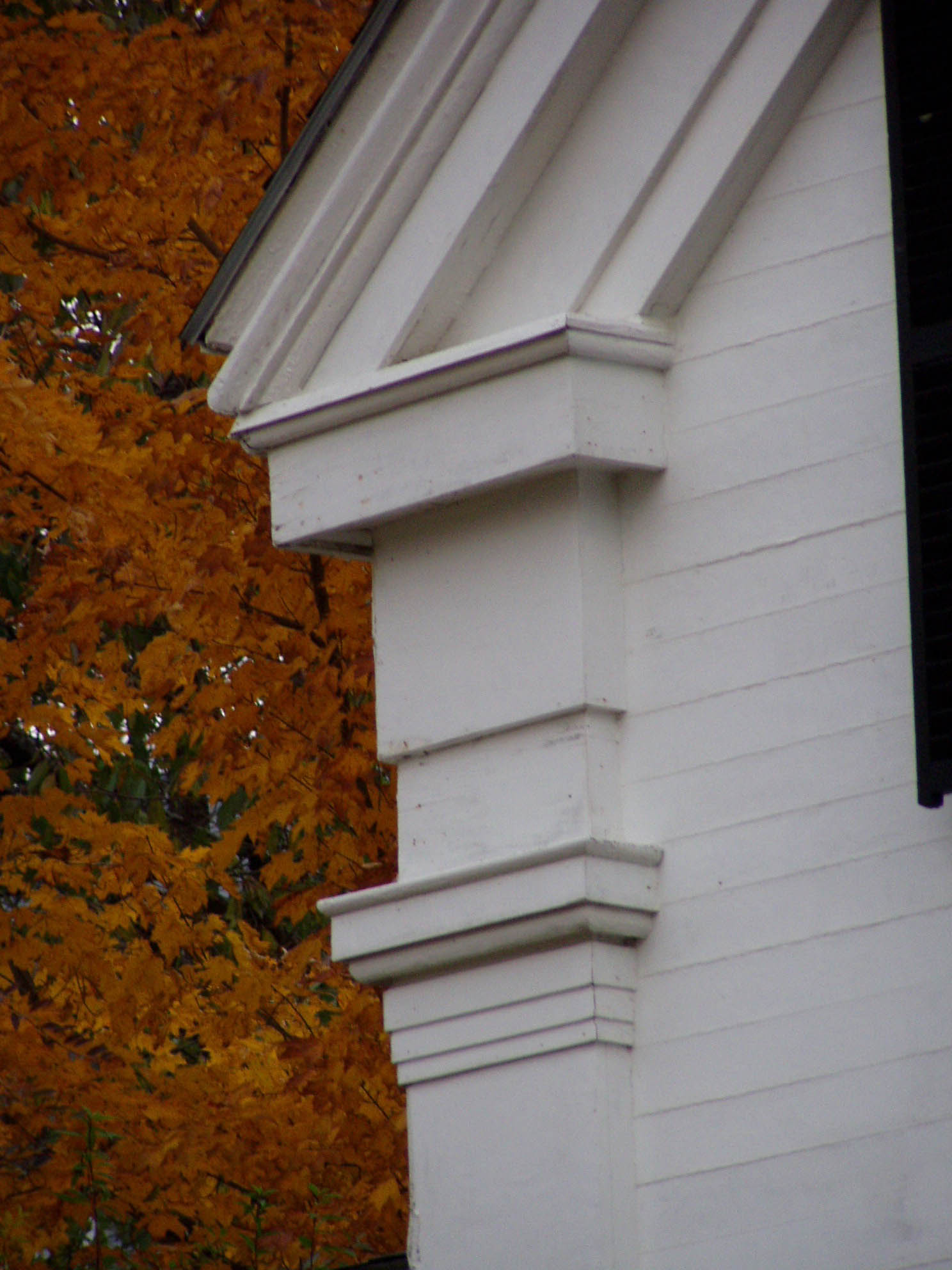 Doric columns
Doric columns
This classic home is an outstanding example of Greek Revival architecture so popular with builders in 19th century Thomaston.
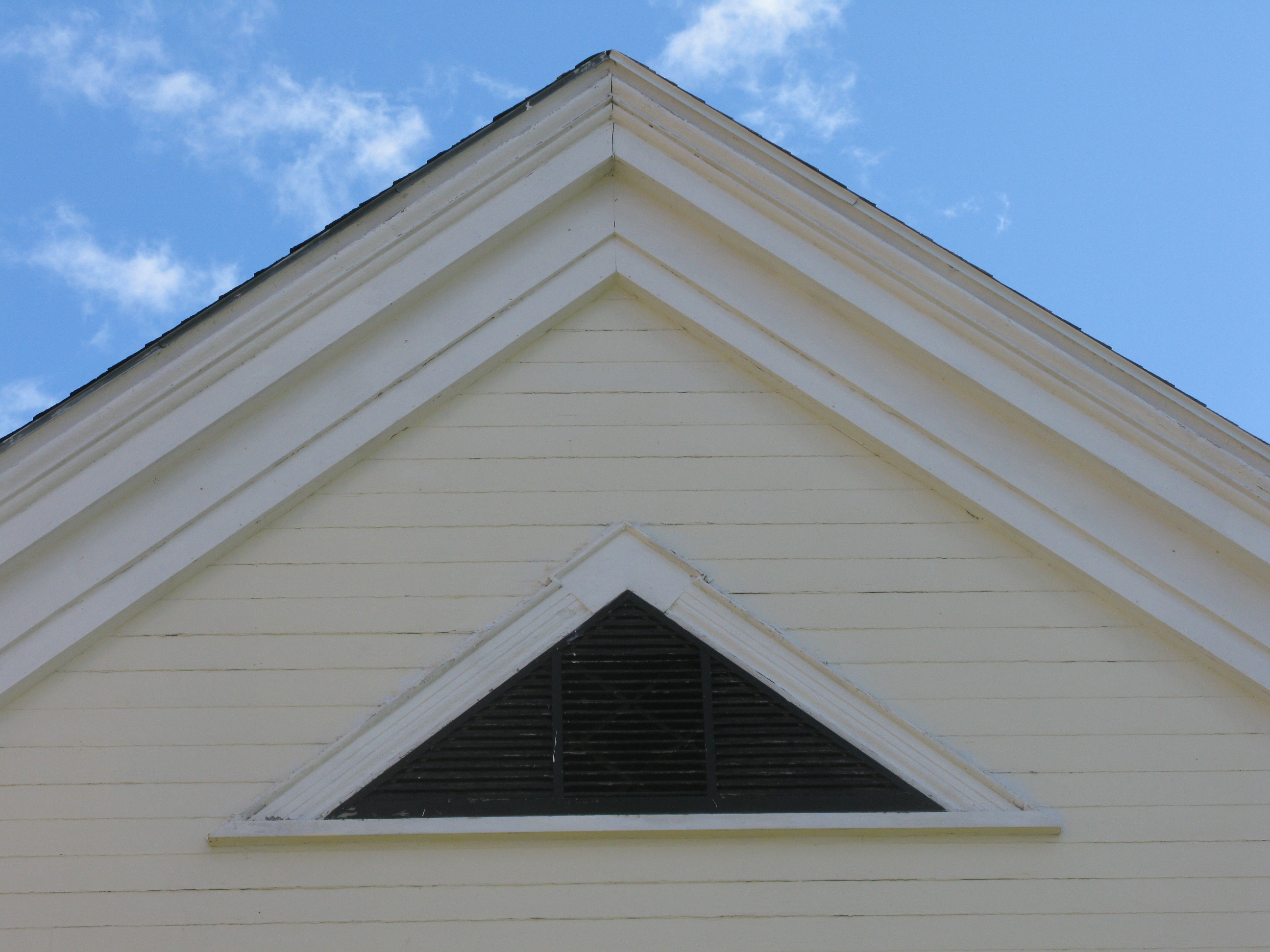 Gable and flush board siding
Gable and flush board siding
With gable-end-to-street positioning, the use of identical porches on either side allow for two distinct entrances.
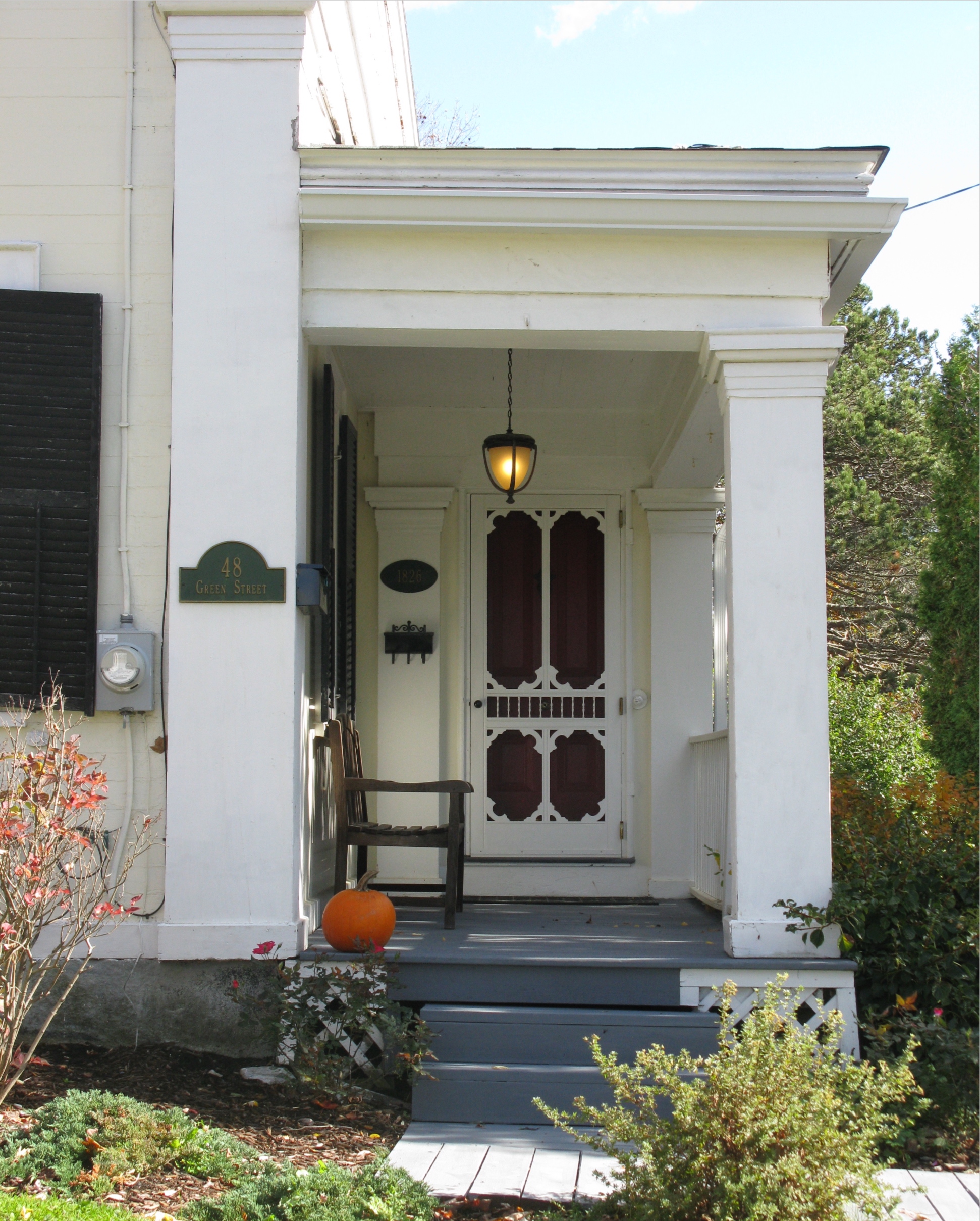 South porch entrance
South porch entrance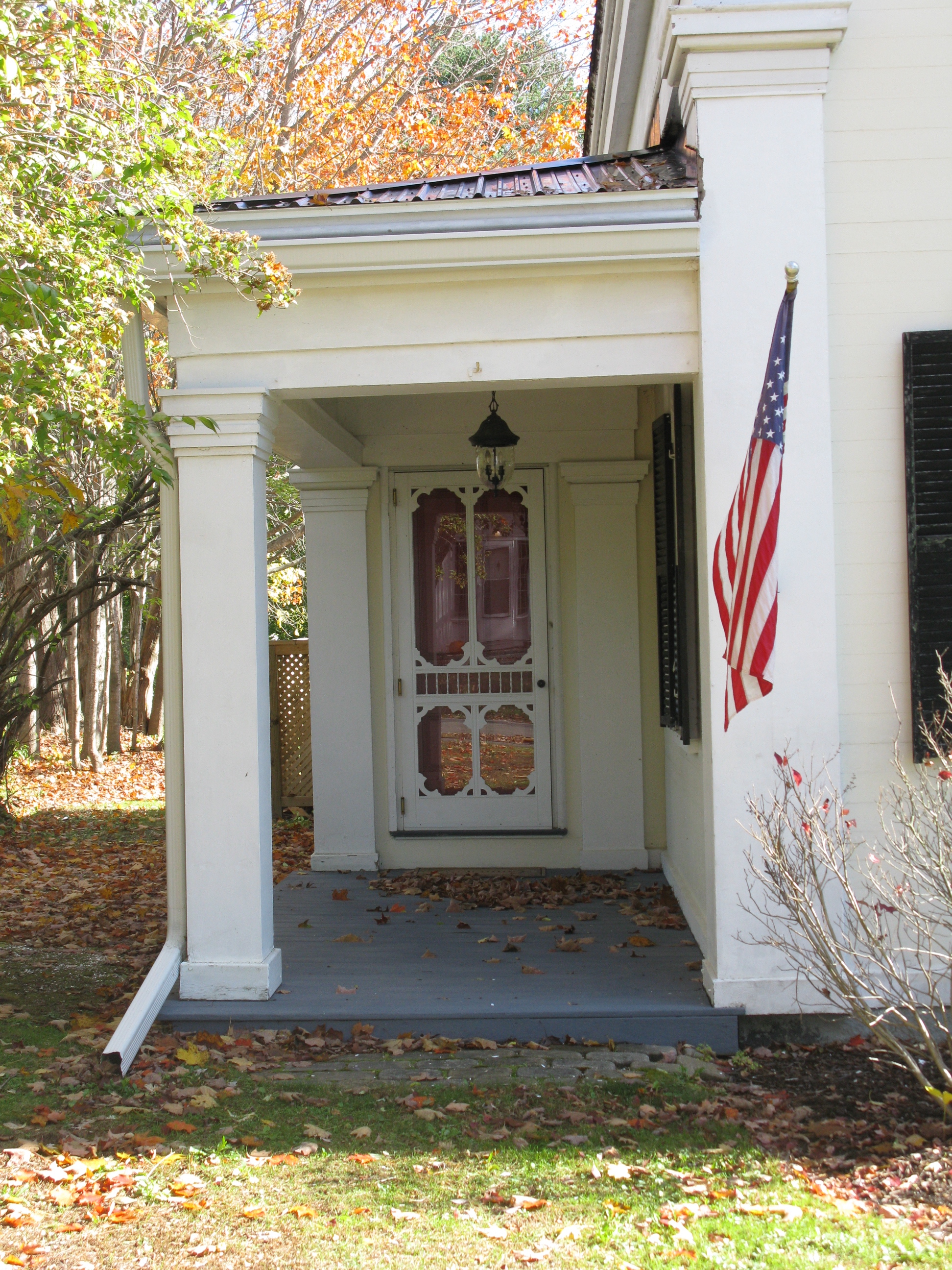 North Porch Entrance
North Porch Entrance
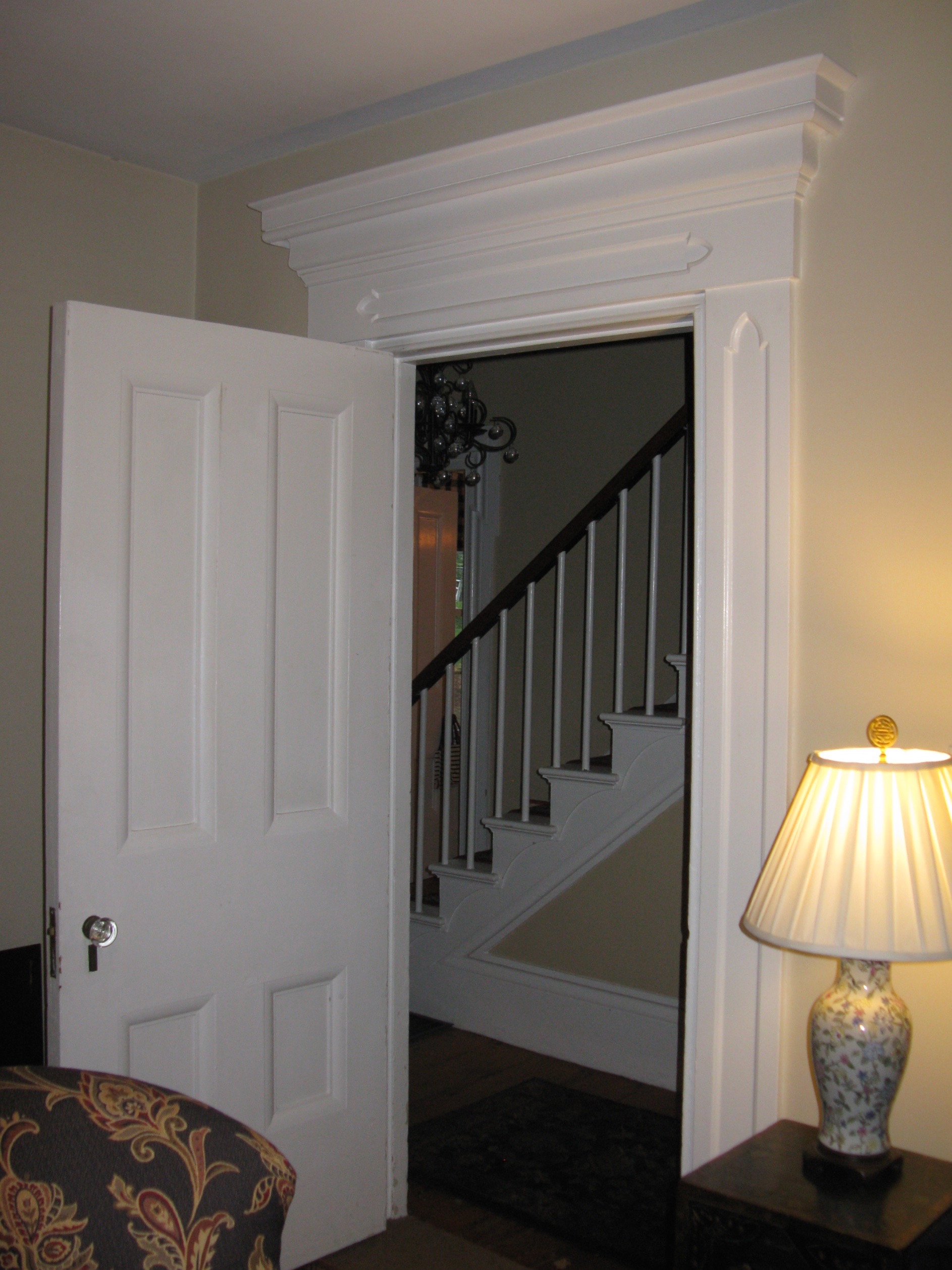 Door trim and moulding
Door trim and moulding
Armed with Asher Benjamin‘s Carpentry and Architectural Designs Handbook, a Thomaston shipbuilder had the plans, materials, and the necessary labor along with several streets leading to his waterfront
shipyard on which to build.
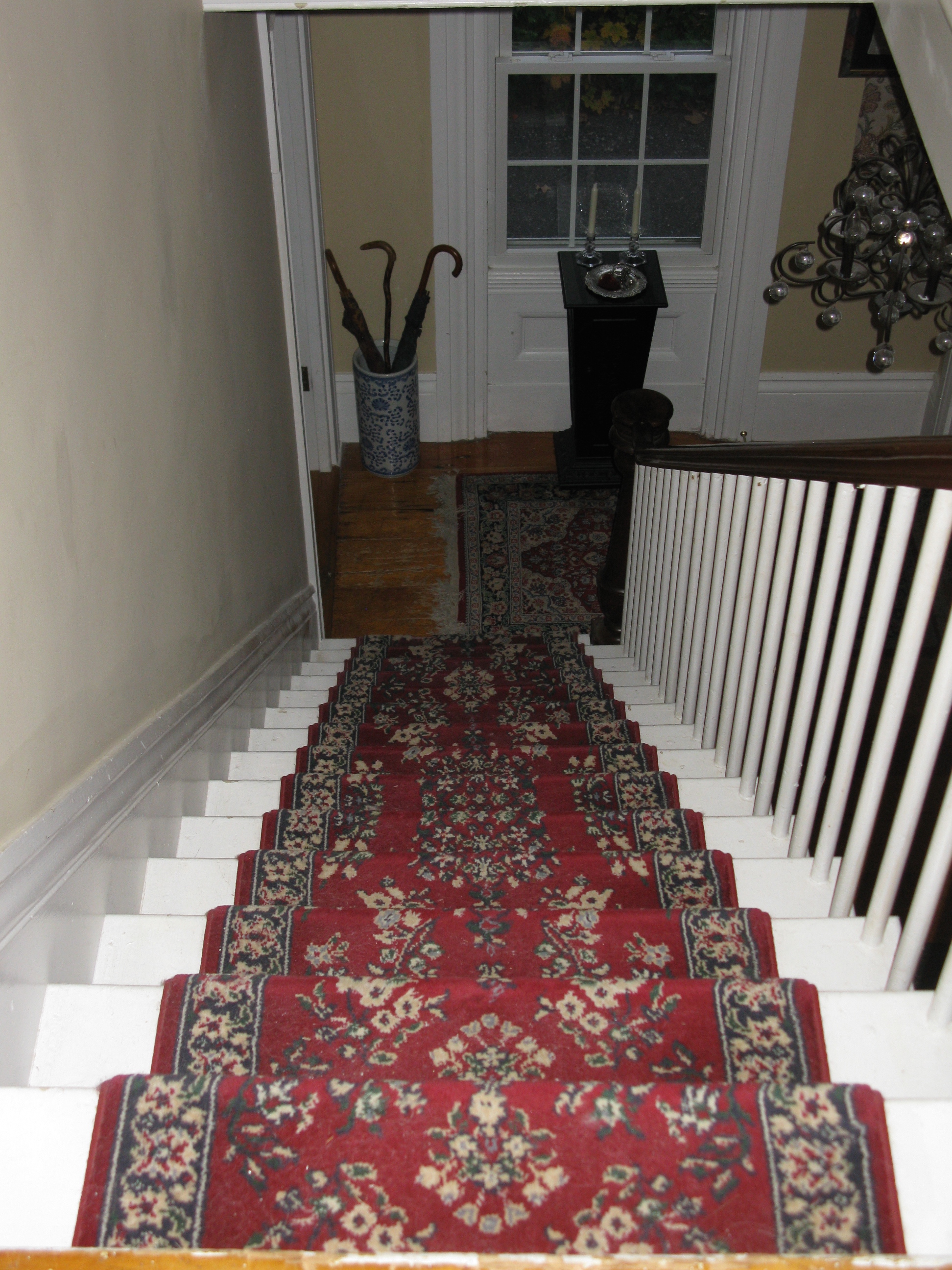 South stairway
South stairway
It is believed the house was constructed as a duplex since, divided through the middle, the floor plan is as close as possible to an exact mirror image - including a double parlor separated by pocket
doors and back-to-back stairways.
The two families of Lermond and Morton may have lived here together at one time, and in the early 20th century, the two Lermond sisters could have kept separate quarters.
Joshua A. Morton moved from Friendship to Thomaston in 1826 and purchased a large tract of land bordering the east side of Green Street, extending to Water Street. It is believed he built a house on the
southern half of the lot at 48 Green Street that was later replaced by this present house. Joshua (1789-1857) married 1st Jerusha Cobb and 2nd Mary Davis and between the two wives, Joshua had 15 children,
most of whom are buried in the Thomaston Village Cemetery.
Joshua and his son, Charles C. Morton, purchased waterfront land and established the shipbuilding firm of J. and C. C. Morton on the site later occupied by Morse Boatbuilding Company at 70 Water Street.
Albert Morton, another son of Joshua, also a ship carpenter, worked at the Lermond and Gilchrest shipyard. In 1855 Albert sold two small lots, including the small house built by his father, to Charles
Lermond, shipbuilder/carpenter, married to Albert?s sister, Rebecca Morton. Either Albert or Charles - both ship carpenters - are credited with building the impressive Greek Revival style dwelling on the
site of Joshua Morton?s original house.
Charles Lermond and his wife, Rebecca, had eight children, five of whom died young. Charles built ships with Lermond, Morton and Gilchrest. His eldest child, Aroline, a dressmaker, married John Gorwaiz in
1886 and moved to Newburyport, MA. Aroline and her sister, Lauretta Tobie, retained the property at 48 Green Street after their father died in 1890.
Aroline returned to live in the house with her sister and niece, Lauretta and Elizabeth Tobie, after her husband died in 1912. Lauretta died in 1929 and Aroline in 1936. Elizabeth and her husband, Sidney B.
Lermond, master builder in a Bath shipyard, next lived in the house, which passed to neighbor Dorothy Brennan in 1950 upon Elizabeth?s death. At that point, the property had remained in the family for 124
years.
The Lermond family graves are located in Elm Grove Cemetery.
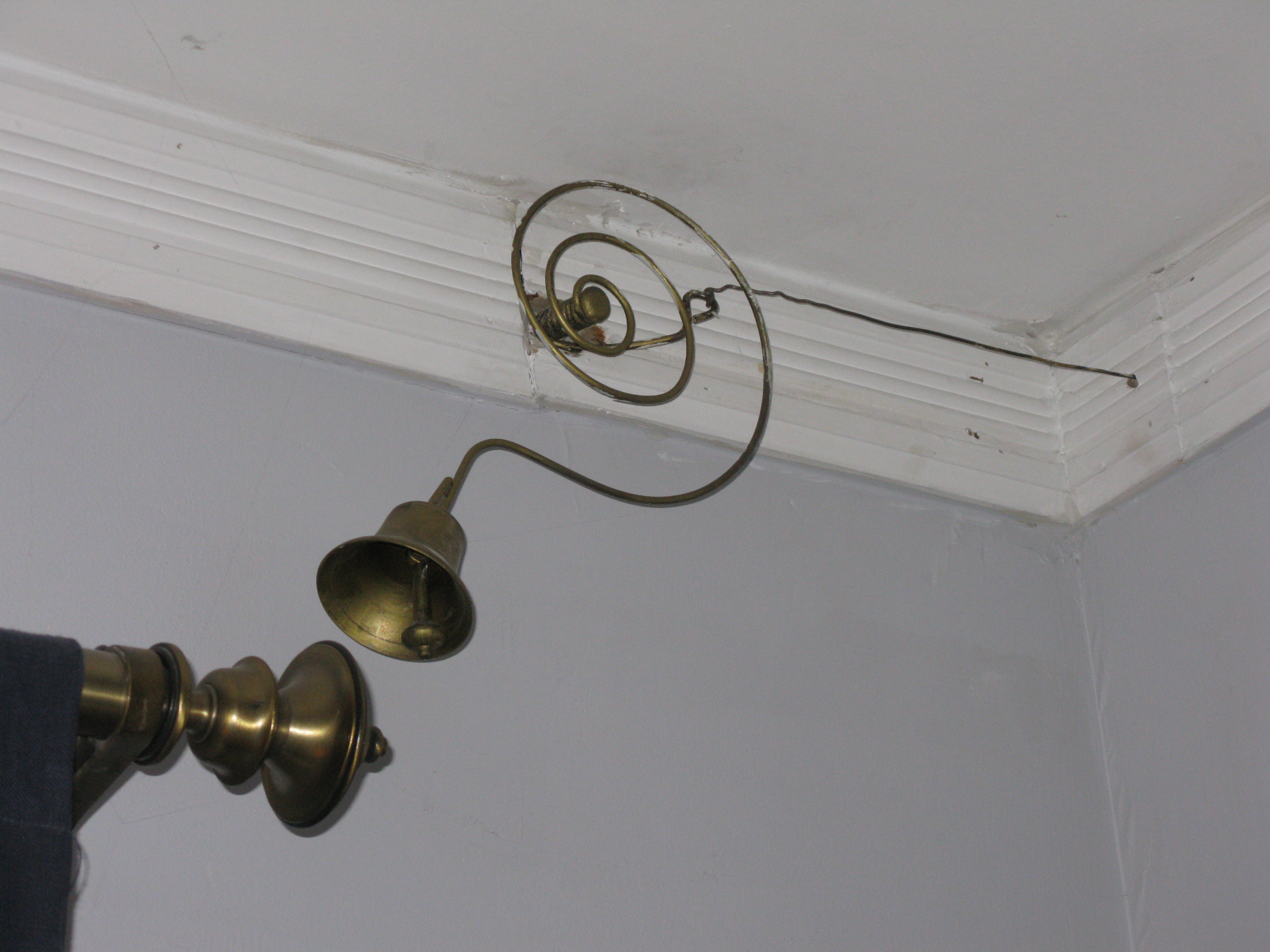 Antique door bell
Antique door bell
with original brass bell
affixed to pull chain
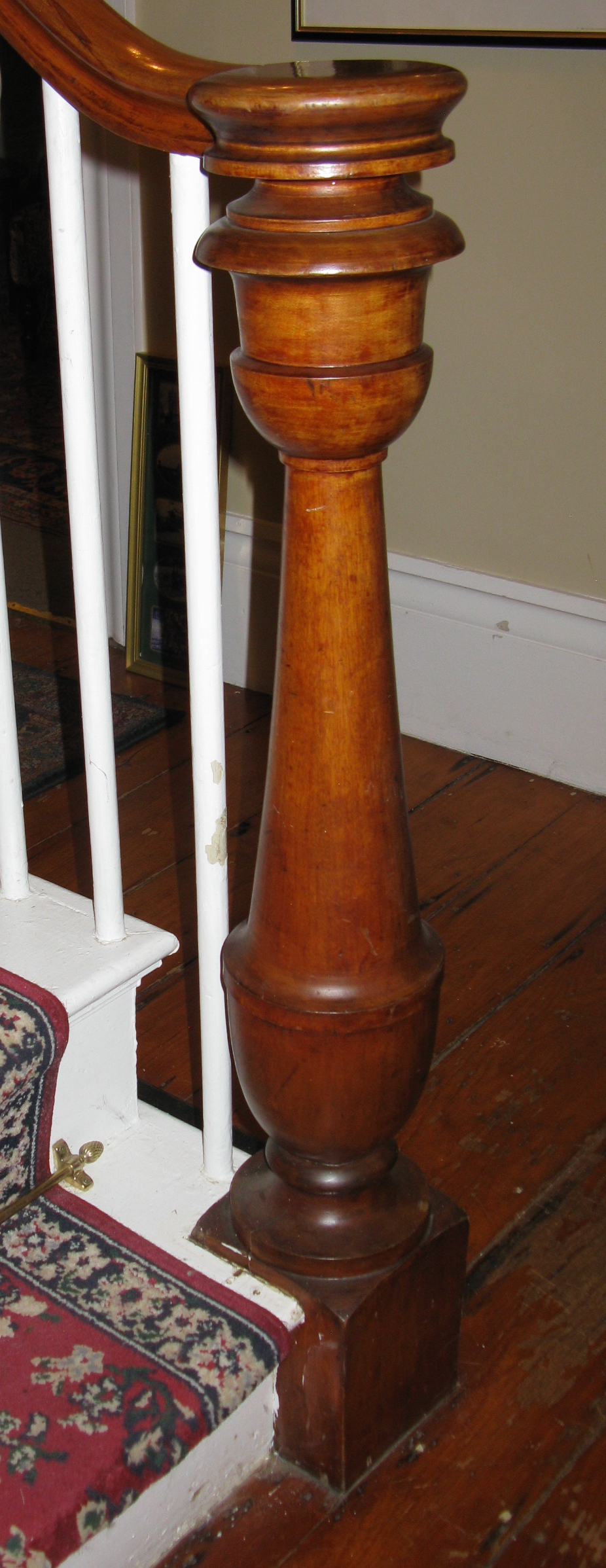 One of two identical
One of two identical
newelposts on the
mirror image staircases |
| Sources: Land deeds, Census Reports, Eaton, FLS Morse, Town that Went to Sea, Early Newspapers; article by Samuel Green, Journal of the Soc of Architectural Historians,
X, 4, who claims 1847 construction date. Research by Margaret McCrea |
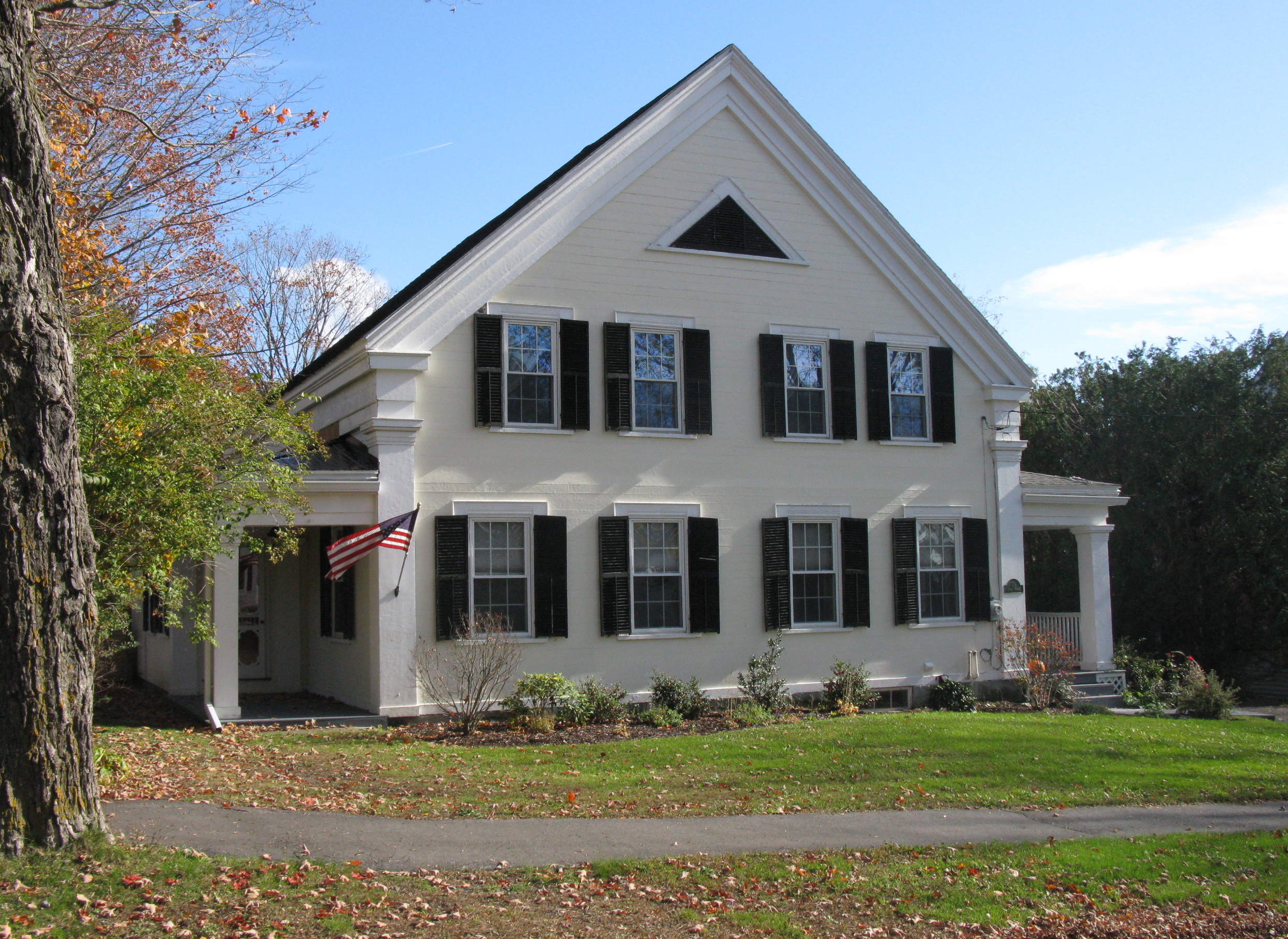

![]()